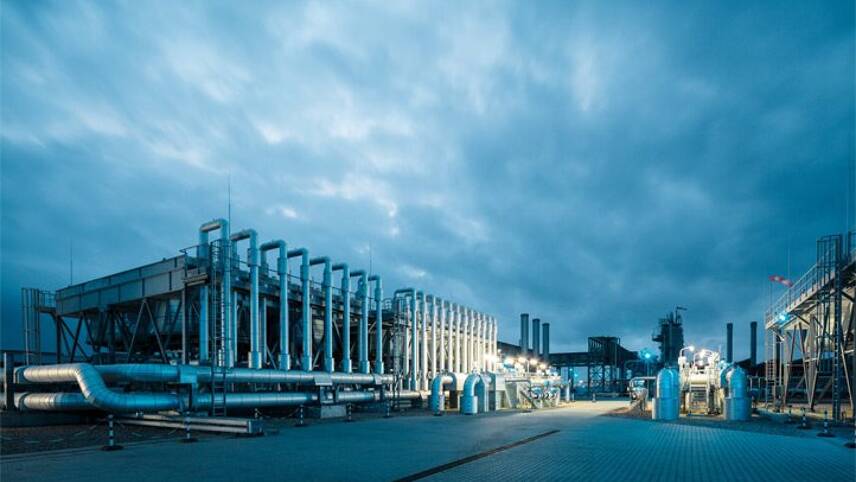Register for free and continue reading
Join our growing army of changemakers and get unlimited access to our premium content

Pictured: Uniper's gas storage plant in Etzel
The new target covers the firm’s absolute emissions across all scopes. Uniper claims it can deliver more than half of the decarbonisation progress needed by 2030, on a global basis, and that it will reach net-zero electricity generation in Europe by 2035.
To meet the new aims, Uniper will phase-out all of its coal operations. These total 7GW at present.
At the same time, it will work with Finnish state-owned energy firm Fortum – its majority shareholder – to bring more renewable electricity generation online and to launch green hydrogen projects. Uniper is targeting 1GW of additional wind and solar by 2025 and Fortum will bring a further 0.5GW-1GW online in the same timespan. Some of this will be located in Russia.
The other core facets of Uniper and Fortum’s partnerships are making gas assets more efficient and lower-carbon and scaling up green hydrogen. Specific time-bound targets for hydrogen have not yet been announced. At this stage, the companies will form a working group with other businesses to determine how to “actively shape” the international hydrogen market across the Nordic countries.
“In our view, hydrogen is both a source of energy and a platform of opportunities to effectively advance the goal of climate neutrality for most industries, including the chemical, steel, heating, freight and shipping industries, as well as the manufacture of aviation fuels,” the companies said in a statement.
Uniper has pledged to report on progress towards the new goals – and its broader climate risk – in line with the Task Force on Climate-Related Disclosures’ (TCFD) recommendations.
Green hydrogen: A snapshot
Hydrogen is seen as a key lever for decarbonisation for many hard-to-abate sectors. But more than 95% of the hydrogen produced globally in 2019 used fossil fuels.
A recent analysis from Bloomberg NEF concluded that the large-scale, global deployment of renewable hydrogen across the energy, transport and industrial sectors could reduce their annual emissions by up to 34% by 2050 – at a “manageable cost”.
However, for these benefits to be created, storage and pipeline infrastructure will need to expand at a pace – three or fourfold by mid-century. Moreover, to discourage nations and businesses from investing in non-renewable methods of hydrogen, carbon prices would need to be increased significantly from the current global average of £24 per tonne, and government subsidies for fossil fuels drastically reduced.
A sector at risk
Since the IPCC published its landmark report on global warming in 2018, many energy majors have set net-zero or carbon-neutral goals, including Shell, Eni, BP and Equinor.
And, in light of the impact of Covid-19 on the global demand for oil and on the supply chain, many of these businesses have also adjusted their energy forecasts and changed investment priorities accordingly. BP has pledged to cut fossil fuel production by 40% by 2030, for example.
However, concerns around greenwash and about the pace of change remain strong. The IEA claims that the global oil and gas sector allocated less than 1% of its funding in 2019 to renewables. Analysis from the Transition Pathway Analysis found that no major oil companies are fully aligning with 1.5C through their business models.
The oil and gas sector is a major employer and, while some extraction will be likely for decades to come, for the production of petrochemicals and other non-fuel products, climate experts generally agree that it will need to downsize considerably.
To support workers through the transition, the UK Government is looking to adapt its licencing regime and to increase sign-ups to the Green Jobs Taskforce. It is targeting two million ‘green collar’ jobs by 2030 – despite slow progress in recent years.
Sarah George


Please login or Register to leave a comment.